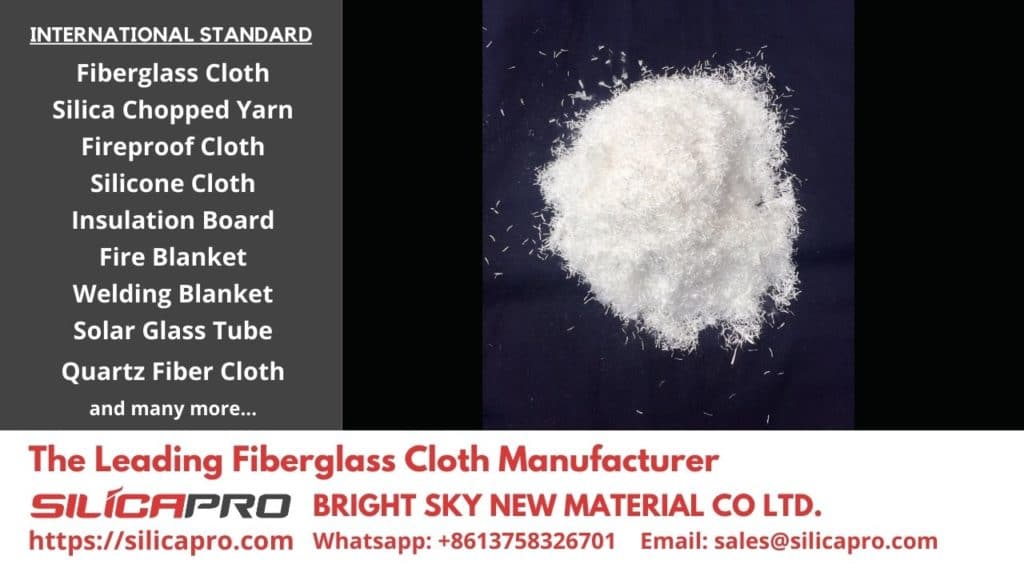
As we already know, these fiberglass chopped strands are very versatile because the material can be applied to various other industrial products. One is essential in the construction industry, namely as a gypsum mixture.
Well, in this review, we will discuss fiberglass chopped strands for gypsum, complete with advantages and disadvantages when applied. So, if you are curious, let’s look at the following review.
Contents
What are Fiberglass Chopped Strands for Gypsum
Fiberglass chopped strands for gypsum is an organic fiber that has a very thin size and is mixed with other materials, namely gypsum. The organic fibers that have been broken down into thousands of tiny filaments are dissolved in the gypsum slurry, making liquid. Because of its liquid form, when it dries, it can be ensured that the filaments of these fibers are well spread out to strengthen the gypsum.
How Do We Make Fiberglass Chopped Strands for Gypsum?
Here we present how to make fiberglass chopped strands for gypsum.
First, mix the main ingredients of this gypsum manufacture such as anhydrous Calcium sulfate (CaSO4), Calcium sulfate hemihydrate (CaSO4.1/2H2O), water, fiberglass, accelerants set, and waterproofing agent. The addition of fiberglass here certainly serves to strengthen the gypsum after it dries. Sometimes, a mixture of starch is added to increase the adhesion between the ingredients.
Second, these materials are fed into the printing machine, either in the form of sheets or rolls. This process is carried out several times to produce interlocking sheets of gypsum slurry. The process is also emphasized so that each filament is connected perfectly. Next, the gypsum sheet will be cut according to the request.
Third, after being cut to the required size, this fiberglass gypsum is put in the oven to reduce the excess moisture content. In the oven, the fiberglass gypsum sheet will be evaporated with hot air until it dries.
The Advantages of Using Fiberglass Chopped Strands for Gypsum
There are several advantages of using fiberglass chopped strands for gypsum, including:
First, the building construction process becomes faster. If usually, the building construction process can take 6-8 months; now, with fiberglass gypsum, it only takes one month.
Second, the price is more economical. The use of fiberglass chopped strands for gypsum can reduce the use of sand by up to 76%, cement by 50%, and steel by 35%.
Third, it is resistant to heat and earthquakes. In the event of a fire, the gypsum will release 15-20% of its moisture to lower the surface temperature. Then the application of gypsum fiberglass as a bearing on the wall without a sliding bulkhead can also make it resistant to earthquakes.
Fourth, cooler than other conventional buildings. Yes, buildings with gypsum will be cooler even without air conditioning.
Fifth, it has high durability, even up to 5x more than other conventional buildings. The strength of gypsum itself has fairly good durability and dimensional stability. It is also resistant to water because during the manufacturing process, a waterproofing agent is added.
Limitations of Fiberglass Chopped Strands for Gypsum
Fiberglass chopped strands for gypsum do have various advantages, but this material also has several limitations, including having to be made in the right proportion and size; a particular machine is needed to print it. In addition, when gypsum fiberglass is applied, it must be stacked neatly to avoid abrasion. The range of distance used for buildings is also limited to 5m.
As we can see, this limitation is only a technical problem. In terms of quality, of course, fiberglass gypsum are quite able to compete with other competitor materials. So, for those interested in using fiberglass chopped strands for gypsum, you can work with us, namely SilicaPro. Our company is a manufacturer, factory, and supplier of fiberglass in China. So, you no longer need to doubt the quality of our products.
Application in Building Construction
Almost every modern building construction uses fiberglass gypsum, both to cover the surface of walls or ceilings, both for interior and exterior elements. The cost of installing and maintaining gypsum fiberglass is also relatively cheap and easy. The shapes can also be adjusted as gypsum designs in general.
For fiberglass gypsum to be sold to the building construction industry, it is usually formed into sheets with a width of 4 feet, a length of 8-12 feet, and a thickness of about 1 inch. While fiberglass gypsum, which is formed into paper, is usually used as a gypsum surface coating itself. This is because the cost is quite cheap, has good water resistance, is resistant to moisture, is not easily degraded, and is not delaminated to cause a decrease in product quality.
In addition, fiberglass chopped strands for gypsum are also applied as cladding in the infrastructure industry, lightweight bearing walls and high capacity shear bearing walls, roof or floor slabs, and as GFRG (Glass Fiber Reinforced Gypsum) panels.
So, much information that we can convey may be helpful.
